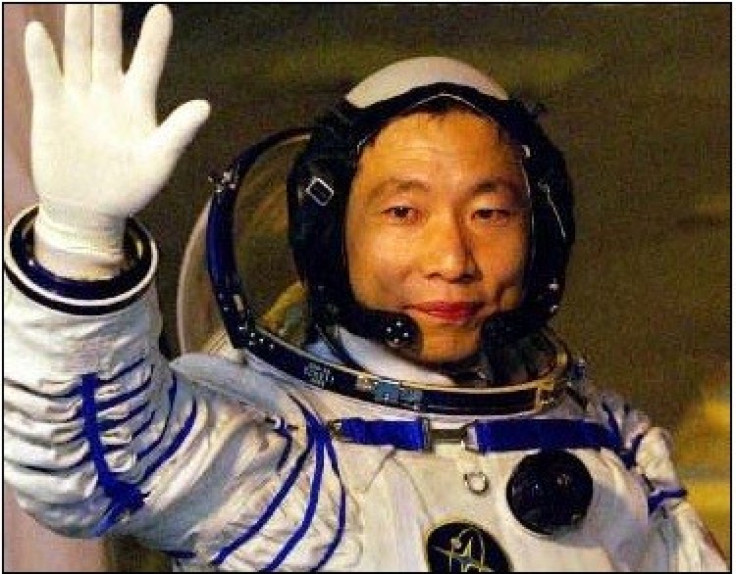Chinese Space Program Leaps Forward, Set To Deliver Women to Space

In recent months, American astrophysicist Neil deGrasse Tyson has lamented the lack of interest and diminishing funding given to NASA. He has also warned of the increasing possibility that China would catch up to the U.S. in a new 21st century space race.
China's space program remains far behind the U.S. in sophistication and technological advancement, but this summer the People's Republic is expected to carry out another two historic firsts.
Sometime between June and August this year, China will carry out its fourth manned space mission. The spacecraft and candidate astronauts, or taikonauts as has become popular to call them in Western media (astronauts are called taikongyuan in Chinese), have already been moved to the massive 2800-square-kilometer Jiuquan national launch center in the country's distant northwest.
The summer mission is predicted to make history by sending China's first female astronaut into space, and will be China's first manned space docking.
China's Manned Space Program
Like the U.S. Mercury and Gemini programs, China's space program has progressed in incremental stages, first with unmanned spacecraft, later by sending animals, and finally by putting humans into orbit.
China's spacecraft, the Shenzhou or divine craft / celestial ship, has benefitted from the precedents set by Russian and American missions during the Cold War.
In 2003, China became the third country in the world to independently send a human being into space. In 2005 it sent a second manned mission on a longer space flight. In 2008 it conducted its first spacewalk.
In late 2011, China placed an as yet unmanned orbital laboratory, Tiangong or heavenly palace, into space in preparation for future missions.
If plans proceed smoothly, the summer 2012 mission will lead to China's first manned craft-to-module space docking as the Shenzhou 9 spacecraft links with Tiangong.
The step is believed to be a pivotal stage in preparations for creating a future space station.
Mystery Women
The Shenzhou 9 mission is slated to carry 3 taikonauts to the Tiangong module. The mission will choose from 7 candidates, 2 of which are women. It is widely believed that the mission will carry at least one female member.
Although the Chinese space agency has denied releasing information on the two female taikonauts, netizens in 2011 identified the two as Liu Yang and Wang Yaping, pilots of the People's Liberation Army Air Force.
However, in 2009, commentary from Chinese officials in charge of astronaut recruitment mentioned that female candidates would be pulled from a list of 16 pilots, originally selected for air force training from a list of 200,000 outstanding high school graduates. The list did not include either Liu or Wang's name.
Whoever the secretive female astronauts turn out to be, they will need to have met strict physical and mental requirements in order to qualify.
China As A 'Spacepower'
China's chief engineer of the Shenzhou spacecraft, Qi Faren, noted in March that a single taikonaut could comfortably remain in space for 60 days inside the Tiangong module. Although a crew of three would be able to sustain themselves for 20 days, this summer's mission would only last for 10.
Qi mentioned that Chian had plans to upgrade water and air recycling on Tiangong to accomodate longer stays for personnel.
In fact, China's plans for Tiangong are only the first stage of a multi-year effort to establish a major long-term space station by 2020. That would be the same year when the International Space Station (ISS) is set to be decommissioned, marking the end of an era for international space cooperation. It also means that China could soon become the only nation in the world sustaining long-duration human habitation of space.
China says that its indigenous docking system could be used to link Shenzhou craft to the ISS if it were ever invited to join other nations on the station. Russia is currently the only nation that has an ability to sustain transport of astronauts and supplies to the ISS, with its Soyuz capsules. However, there is no indication as yet that the U.S., the largest monetary backer of the ISS, has any plan to invite China onto the project.
China is also hoping to put a man on the Moon sometime within the next 20 years.
Qi Faren noted that there was growing debate in China about the utility and value of a moon landing, since it seemed to be too much of an intention to follow in the footsteps of the U.S. His own push, however, was to continue with plans to plant a Chinese flag there.
As the country expects to deliver its first moon rover next year, it seems that a manned landing would be a natural progression. Indeed, many in China's growing space industry dream not only of the moon, but also of Mars.
Neil deGrasse Tyson, for one, shares Qi's confidence and assurance that China will strengthen its manned space program. Tyson believes China will go to both the Moon and Mars. After all, he says, Mars is already red, so that would work well for Chinese marketing and public relations.
© Copyright IBTimes 2024. All rights reserved.











